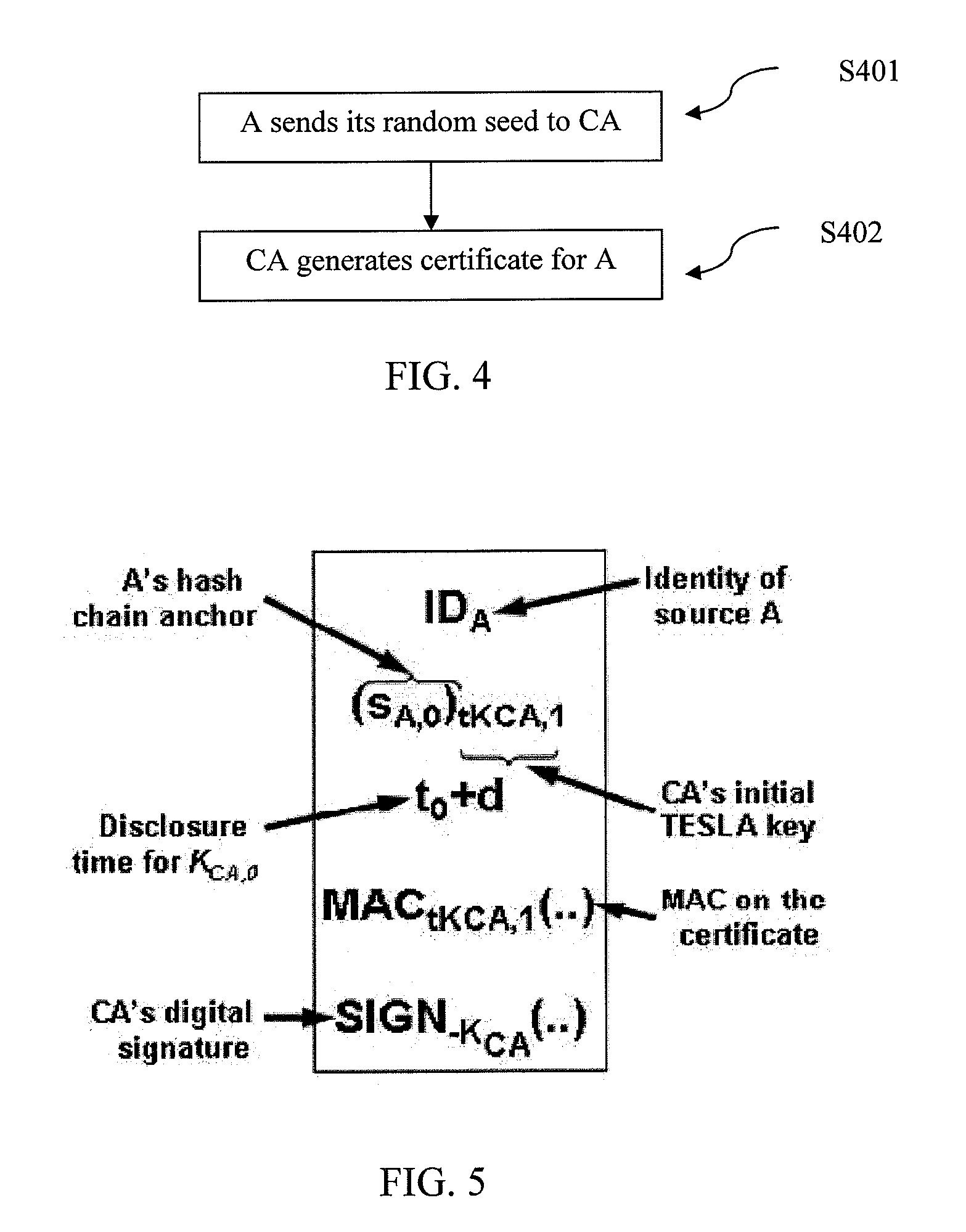Method and System for Source Authentication in Group Communications
a source authentication and group communication technology, applied in the direction of user identity/authority verification, digital transmission, multi-key/algorithm usage, etc., can solve the problem of more complicated group communication, computationally expensive (both in cpu cycles and energy expenditure) to generate digital signatures for messages, etc. problem, to achieve the effect of efficient implementation
- Summary
- Abstract
- Description
- Claims
- Application Information
AI Technical Summary
Benefits of technology
Problems solved by technology
Method used
Image
Examples
Embodiment Construction
[0046]Exemplary embodiments of the present disclosure will now be described more fully with reference to the accompanying drawings.
[0047]In order to describe the operation of the extended TESLA source authentication protocol according to an exemplary embodiment, consider a group of three wireless nodes A, B and C, where A sends messages to B and C. It will be understood that the number of source nodes (wireless nodes in this example) has been shown to be three. However, the number three is just an example and any number of source nodes can be accommodated in this design. The objective is to design an authentication mechanism that allows B and C to securely authenticate messages from A using a computationally efficient algorithm that expends low node energy. The following assumptions are made about the initial security setup of the network for authentication purposes:
[0048]All three nodes have limited energy and processing power, and none has any pre-existing security information abo...
PUM
 Login to View More
Login to View More Abstract
Description
Claims
Application Information
 Login to View More
Login to View More - R&D
- Intellectual Property
- Life Sciences
- Materials
- Tech Scout
- Unparalleled Data Quality
- Higher Quality Content
- 60% Fewer Hallucinations
Browse by: Latest US Patents, China's latest patents, Technical Efficacy Thesaurus, Application Domain, Technology Topic, Popular Technical Reports.
© 2025 PatSnap. All rights reserved.Legal|Privacy policy|Modern Slavery Act Transparency Statement|Sitemap|About US| Contact US: help@patsnap.com



